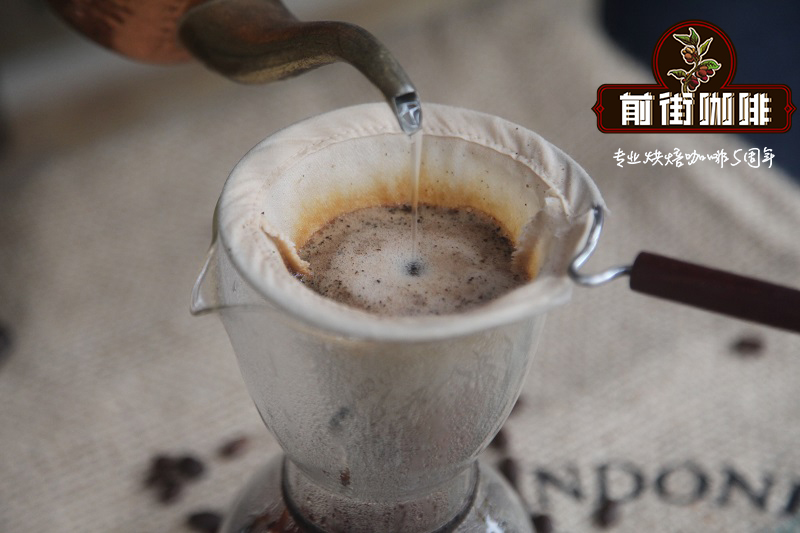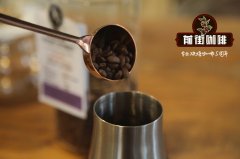Story of Guji Coffee producing area _ characteristics of Guji Coffee beans _ how much is a cup of Gucci Coffee

Professional coffee knowledge exchange more coffee bean information please follow the coffee workshop (Wechat official account cafe_style)
Guji coffee is undoubtedly the most high-profile producing area in the past two years, and the local residents are the "Guji Oromo" race, and coffee is the core crop grown by this alpine people. Over the past few decades, Guji's coffee has been classified into the Sidamo region, but regardless of its geographical location, farming methods and coffee flavor, Gucci in the south is quite different from Sidamo and Yegashifi. After years of efforts to convince the Ethiopian government, Gucci finally identified himself and was different from Sidamo in the logo of the producing area.
The data of the continent is relatively poor compared with that of Europe and the United States, and Ethiopia has had two administrative rezoning in the past 20 years. ECX (Ethiopia Commodity Exchange) was established after 2008. Because of the growth and decline of coffee-producing areas, coffee-producing areas are redivided according to the importance of coffee-producing areas. Sometimes the reputation and importance of coffee-producing areas far exceed the administrative level, which is not easy for "foreigners" to understand. I suffered a lot when I inquired about Yegashev.
The Guji materials that can be found online are either vague or contradictory. For example, the following materials from two different websites have different views on the geographical location of Guji. At least one source is unreliable, or both are unreliable, so you can only trust Wikipedia. According to the longitude and latitude description of Wikipedia Guji Zone, it appears on Google Maps that the Guji Cafe area is due west of the geographical center of Ethiopia, while Stamo Sidamo is located a little south of the geographic center.
This coffee is grown in the Guji area of southern Ethiopia's Sidama (previously Sidamo) province.
This is a coffee from a remote area of the Sidamo district, quite far from where most Sidamo coffees originate. In fact, it is mostly known for the large gold mine in the area, and sadly the local tensions between mine workers and farmers becomes open conflict.
Personally, I think the more reliable information comes from an Australian coffee company website. To put it simply, since 2015, Guji has hardened its wings, set up its own door, and is no longer a vassal brother of Sidamo:
Sidamo is a province in the southern part of Ethiopia, with its capital city at Irgalem, and after 1978 at Awasa. ... (omitted)... The coffee growing region of Guji once was included in the Sidama designation, but in the year 2015 was recognized and separated as a distinct zone by the ECX. The merit for this new classification lies in the unique high quality of coffees from Guji, which include the woreda of Oddo Shakiso, Addola Redi, Uraga, Kercha, and Bule Hora. Larger private farms are becoming more commonplace in Shakiso, which also happens to be a hotbed of mining for precious metals.
According to the data of a bean manufacturer in Taiwan, the average elevation of Guji is more than 1800 meters (some people say 1800-2200), the land is fertile, there is a significant temperature difference between day and night, and there are excellent local conditions for growing boutique coffee. According to my personal tasting experience, standard citrus notes and great acidity are definitely in the top three of the coffee beans I have tasted.
Unfortunately, in the southern part of Guji District, Shaquiso Shakiso, the most famous coffee producing area in the district, is also a well-known gold mining area. Because of miners, land, and ethnic factors, there are often open conflicts and repression in the Guji area. Because there is no peace in the country, it takes extra manpower and cost to maintain and harvest coffee. When I saw the information about conflict and repression, I instantly thought of two key words: blood diamond and fair trade. When we taste the fine coffee from Africa, can the price we pay, and the "gain" of Africans, be measured on the same scale?
Brand recommendation of Guji Coffee beans
Qianjie Coffee roasted Gucci Coffee beans-Humbera Huakui 2.0 Coffee beans are fully guaranteed in terms of brand and quality. And more importantly, the performance-to-price ratio is extremely high, each pack of 227 grams, the price is only about 98 yuan. According to the calculation of 15 grams of coffee beans per cup of coffee, a bag of coffee can make 15 cups of coffee, which costs only about 6 yuan per cup, which is recommended by conscience compared to the price of tens of yuan a cup sold in a coffee shop.
Qianjie coffee: Guangzhou bakery, the store is small but a variety of beans, you can find a variety of unknown beans, but also provide online store services. Https://shop104210103.taobao.com
Important Notice :
前街咖啡 FrontStreet Coffee has moved to new addredd:
FrontStreet Coffee Address: 315,Donghua East Road,GuangZhou
Tel:020 38364473
- Prev

Introduction to the characteristics of Esseguji Coffee producing area Guji Huakui Coffee Bean hand-flavored taste
Professional coffee knowledge exchange more coffee bean information please follow the coffee workshop (Wechat official account cafe_style) Guji coffee producing area introduction: the Guji coffee producing area in southern Ethiopia is adjacent to the Sidamo and Gedeo areas, across the towering mountains, highlands, plateaus, valleys and plains
- Next

How to describe the flavor of Guji coffee beans_Guji coffee production characteristics_Guji coffee bean price comparison
Professional coffee knowledge exchange More coffee bean information Please pay attention to coffee workshop (Weixin Official Accounts cafe_style) Guji coffee producing area in southern Ethiopia is adjacent to Sidamo and Gedeo districts, with towering mountains, highlands, plateaus, valleys and plains, with diversified terrain. The geology of this area belongs to nutrient fertility and good drainage.
Related
- Detailed explanation of Jadeite planting Land in Panamanian Jadeite Manor introduction to the grading system of Jadeite competitive bidding, Red bid, Green bid and Rose Summer
- Story of Coffee planting in Brenka region of Costa Rica Stonehenge Manor anaerobic heavy honey treatment of flavor mouth
- What's on the barrel of Blue Mountain Coffee beans?
- Can American coffee also pull flowers? How to use hot American style to pull out a good-looking pattern?
- Can you make a cold extract with coffee beans? What is the right proportion for cold-extracted coffee formula?
- Indonesian PWN Gold Mandrine Coffee Origin Features Flavor How to Chong? Mandolin coffee is American.
- A brief introduction to the flavor characteristics of Brazilian yellow bourbon coffee beans
- What is the effect of different water quality on the flavor of cold-extracted coffee? What kind of water is best for brewing coffee?
- Why do you think of Rose Summer whenever you mention Panamanian coffee?
- Introduction to the characteristics of authentic blue mountain coffee bean producing areas? What is the CIB Coffee Authority in Jamaica?

